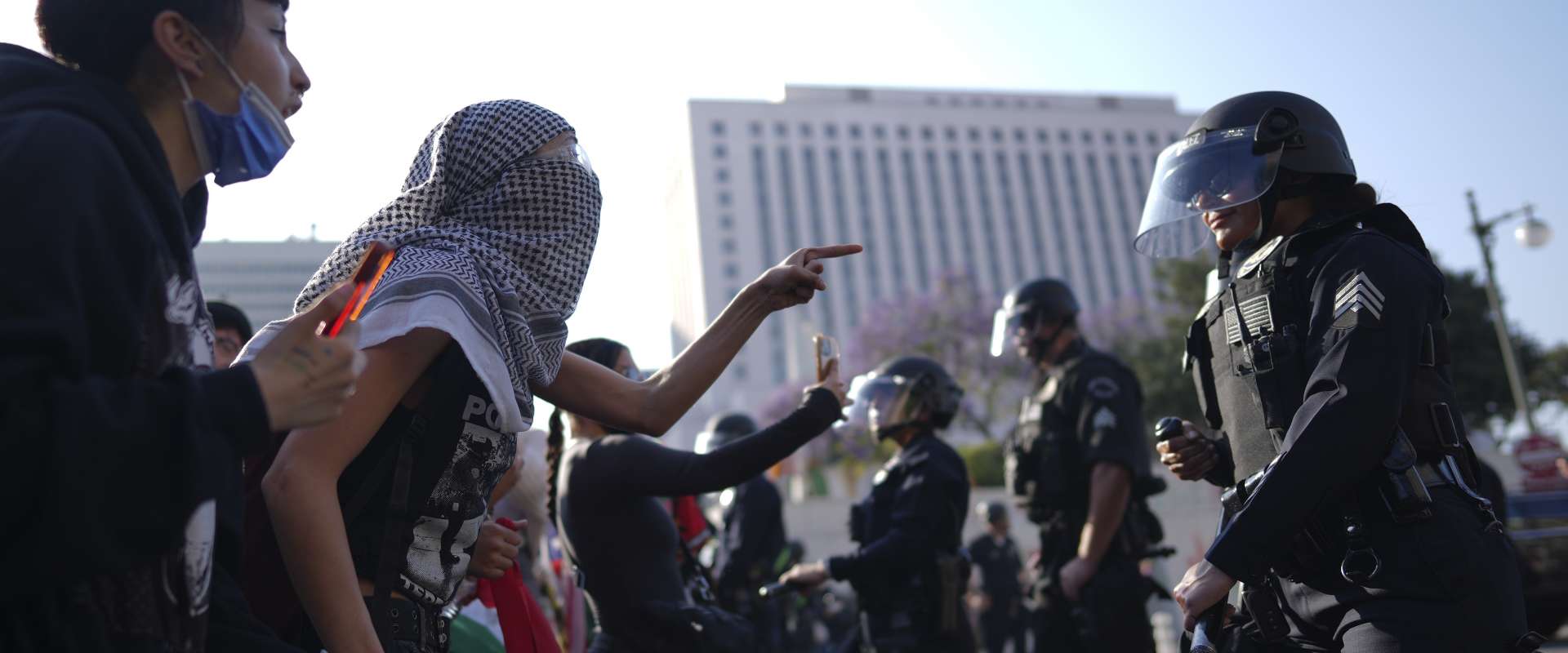“There really is an upper layer of the working class, supported by a thousand kinds of ‘direct and indirect’ benefits flowing from imperialism. Its starkest expression is a massive labor bureaucracy that’s becoming more integrated into the imperialist capitalist machine than ever before.”
This is the main thesis of the new guest editorial in Left Voice by Jason Koslowski. Here are a few points in response.
A solution in search of a problem
As much as we uphold Lenin as one of the greatest theorists of our tradition, it is important to identify his few mistakes. The truth is, there was no reason for Lenin’s original thesis on the labor aristocracy in Imperialism: The Highest Stage of Capitalism (1917). Lenin was trying to explain why the socialist parties went imperialist and nationalist and signed onto World War I. He wanted to explain why the revolutionary class, the working class, supported the war at least in the beginning. This inquiry ignored Marx’s (and Lenin’s own) understanding of working-class consciousness: “The ruling ideas of any age are the ideas of its ruling class.”
Mixed consciousness on the part of workers results from the domination of ruling-class ideas combined with workers’ opposition to the oppression and exploitation they face. Mixed consciousness is prevalent among workers outside a revolutionary period. Thishelps explain working-class support of the war. The main leaders of social chauvinism (aggressive nationalism on the part of social democrats) were the union bureaucracy and party leaders who did have a stake in the system and used their leadership to reinforce imperialist politics among workers.
In contrast to the labor and parliamentary leaders, highly paid metal workers were among the most revolutionary elements in the Russian Revolution. Lenin’s theory of the labor aristocracy was a solution in search of a problem. Solutions for an invented problem usually lead people astray.
Capitalists must exploit the working class to accumulate capital. They will not generally employ workers they cannot exploit. Bribing a section of the working class with the super-profits of imperialism makes no sense since it is against the interest of capitalists.
In the last 50 years, there has been an attack on the living standards and unionization rates of the whole working class, including the highly paid “aristocracy.” Home construction used to be overwhelmingly union. After years of attacks, it is overwhelmingly non-union. This is also true of auto workers; the number of unionized workers in that industry has fallen precipitously. Some of this is due to automation. However, whole swaths of the auto-parts industry have gone non-union. It is a similar story with the electric-vehicle industry.
The labor-aristocracy thesis is also logically unsound. Any exploitation that produces new capital can produce new employment. Do the workers who are hired at the new factory have an interest in further exploitation? Must they now be supporters of the system of exploitation?
This hardly seems like a ruling-class strategy of bribery. Employers are not trying to bribe the “aristocracy.” Instead, they are trying to bust its unions.
Koslowski melds together the labor “aristocracy” and the labor bureaucracy. This confusion does a disservice to Marxist analysis. As noted, capitalists must exploit workers. To intensify this exploitation, they employ managers and supervisors. Supervisors are often both exploited and enforcers of exploitation on those below them — members of the working class with contradictory positions. Unlike managers and supervisors, the labor bureaucracy is not part of the working class and is therefore not a labor “aristocracy.”
The labor bureaucracy plays a mediating role between labor and capital. Much of Koslowski’s criticism of this layer and the new NGO bureaucracy is right on point. Capitalists are willing to “bribe” middle layers with a slice of their profits to intensify exploitation.
However, if workers are exploited, they are not being paid the full value of what they produce. Even if they are relatively highly paid, as long as they produce surplus value, they are not receiving a slice of imperialist profits produced by other workers. Koslowski ’s criticism of the labor and NGO bureaucracy does not back up the labor-aristocracy thesis.
An anti-working-class premise
Koslowski makes no attempt to define the labor aristocracy except to mention auto workers. The author also estimates that the labor aristocracy starts at $30 per hour. This is ludicrous! In Seattle, a single worker supporting a family can barely afford living expenses on $30 an hour. Rent alone would run over $2000 a month. A worker making $30 per hour would take home $3500–4000 a month after taxes. After paying rent of at least $2000–2500, little is left to cover all the other expenses. $30 an hour is the minimum starting demand for Amazon workers organizing in Kentucky. If they win, will they become aristocrats? Calling workers who earn $30 an hour aristocrats is anti-working-class.
The buoying of the US economy with imperialist profits impacts the whole US economy, not just the labor “aristocracy.” Tony Cliff made this point in his criticism of Lenin’s labor-aristocracy thesis. The reinvestment of imperialist profits may increase employment, but that increase is not confined to the “aristocracy.”
The labor-aristocracy thesis is also logically unsound. Any exploitation that produces new capital can produce new employment. Do the workers who are hired at the new factory have an interest in further exploitation? Must they now be supporters of the system of exploitation?
Workers who are employed at jobs that flow from imperialist super-profits may feel they are better off because of those profits. This feeling ignores the horrific effects of imperialism even for US workers, from taxes to the cutting of social programs to the deaths of working-class soldiers. Since all workers would be better off without capitalism and therefore without imperialism, this too is a form of false consciousness. The labor-aristocracy thesis accepts this false consciousness.
The most important thing is that the new factory workers will also be exploited. They are not being bribed with super-profits. Instead, they are being exploited and have an interest in opposing exploitation. Since imperialism is a prime driver of exploitation, they also have an interest in opposing it.
Obviously, a booming economy with high employment can at least temporarily reduce the desire for revolution. This impacts the overall political climate, not just the “aristocracy.” As Marx said, a booming economy is the best thing for workers, but also the worst thing since they are more exploited and oppressed in a booming economy than in a stagnant one. Even in a booming economy, workers have a fundamental interest in overthrowing exploitation and therefore overthrowing capitalism.
Institutional racism, imperialism and false consciousness
Many proponents of the labor-aristocracy thesis argue that the interests of white workers overlap with the interests of the labor “aristocracy.” It is true that white workers who identify with racism do so in part because they are better off than Black workers. Their very real relative benefits within institutional racism leads them to draw the unconscious illogical conclusion that they are better off because of institutional racism.
In reality, while racism gives relative advantages to some workers, it divides and weakens the working class as a whole and drives down wages for all. Racism among white workers is a form of ideology; it is false consciousness.
Likewise, workers who are employed at jobs that flow from imperialist super-profits may feel they are better off because of those profits. This feeling ignores the horrific effects of imperialism even for US workers, from taxes to the cutting of social programs to the deaths of working-class soldiers. Since all workers would be better off without capitalism and therefore without imperialism, this too is a form of false consciousness.
The labor-aristocracy thesis accepts this false consciousness. It says that workers are correct in identifying with imperialism since they gain from it. It uses their supposed material interests as a reason that they support imperialism.
An injury to one is an injury to all
The labor aristocracy thesis draws the political lines of struggle in the wrong place. As Koslowski correctly implies, there is an important contradiction between the rank and file and the bureaucracy in a union. Firebrand’s tradition is strong on the need for rank-and-file organization. The author’s exposé of the labor bureaucracy is welcome. So is his criticism of the NGO bureaucracy. We need to oppose its pernicious influence in working-class and other movement organizing.
However, including an undefined “aristocracy” with these bureaucracies makes it seem like the conflict is between low-paid and higher-paid workers. Working-class solidarity requires that we build support for the whole working class when it goes into struggle. The low-paid should support the higher-paid and vice versa. The “all” in the slogan “An injury to one is an injury to all” is the whole working class, not just low-paid workers. At its most extreme, the labor aristocracy thesis leads to “white skin privilege” ideas which are toxic to working-class organizing.
The logical fallacies in the labor-aristocracy thesis can lead to the many pitfalls found in Settlers: The Mythology of the White Proletariat by J. Sakai (1983). Some on the left extend the labor-aristocracy idea to the whole US working class. This is a basis of Third Worldism and a rejection of the agency of the US working class in revolution. This is one of the key political battles we need to take on to win people to Marxism.



